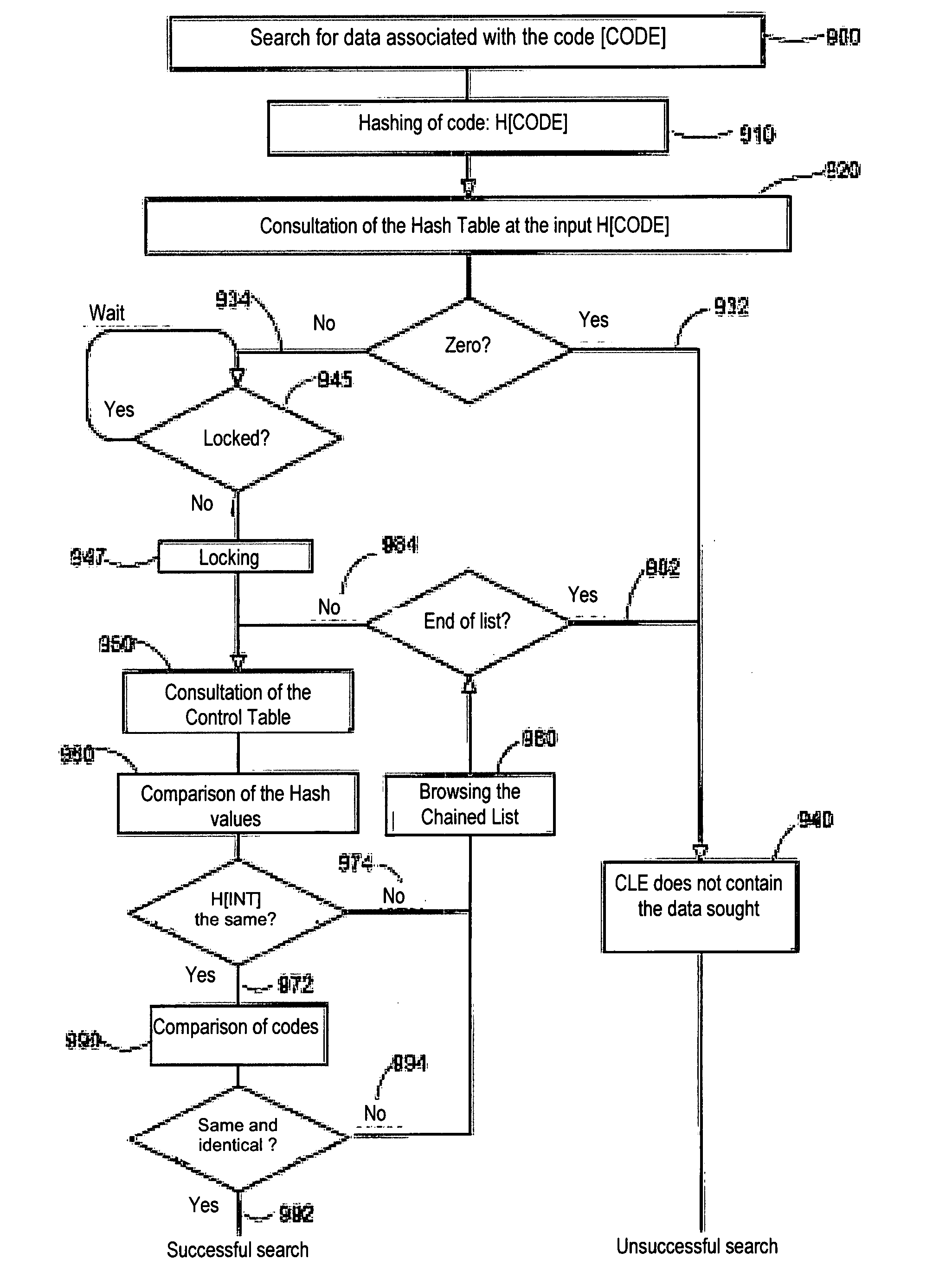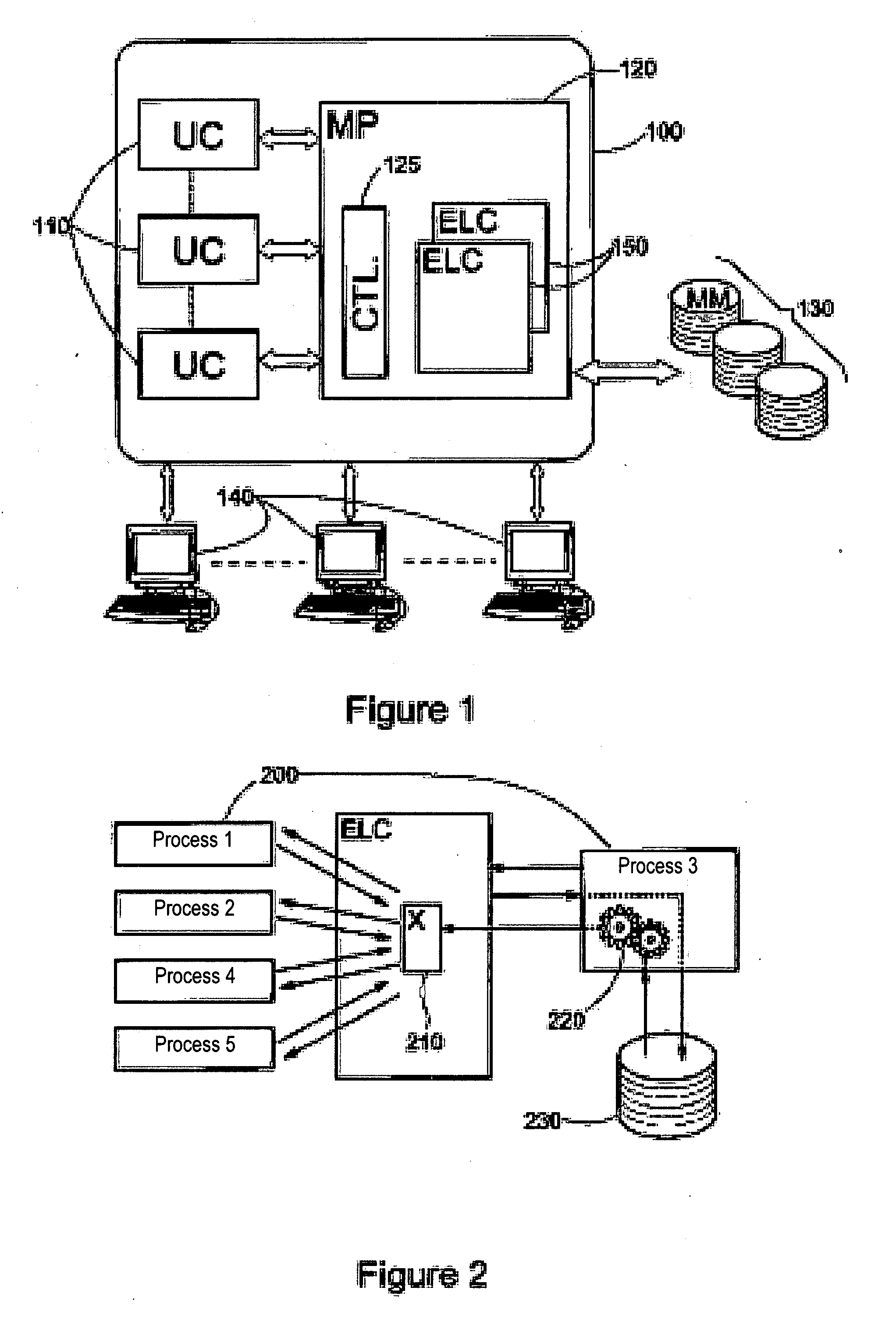Method and System For Maintaining Consistency of a Cache Memory Accessible by Multiple Independent Processes
a cache memory and independent process technology, applied in the field of maintaining, can solve the problems of serious impact on the speed of access to this data, insufficient update of organisational data inability to so as to prevent any locking and maintain the consistency of the cache memory
- Summary
- Abstract
- Description
- Claims
- Application Information
AI Technical Summary
Benefits of technology
Problems solved by technology
Method used
Image
Examples
Embodiment Construction
[0027]As illustrated diagrammatically in FIG. 1, the invention relates to a system (100) which comprises one or more central units (CU's) of computers (110) sharing a rapid access storage means (120). However limited in size, the shared memory (SM) may itself access one or more mass memories (MM) located in the backplane and generally consisting of batteries of magnetic discs (130) that are able to store very large quantities of data. In particular, data bases, for example those which have to be consulted by travel agencies throughout the world and which collect all the information on world air traffic or reservation statuses of international hotel chains. The central units operate under the control of an operative system. For example, UNIX is a frequently used operative system because it not only enables numerous users (140) to be processed simultaneously, but it is also able to generate a large number of tasks of processes which operate independently at the same time. In the share...
PUM
 Login to View More
Login to View More Abstract
Description
Claims
Application Information
 Login to View More
Login to View More - R&D
- Intellectual Property
- Life Sciences
- Materials
- Tech Scout
- Unparalleled Data Quality
- Higher Quality Content
- 60% Fewer Hallucinations
Browse by: Latest US Patents, China's latest patents, Technical Efficacy Thesaurus, Application Domain, Technology Topic, Popular Technical Reports.
© 2025 PatSnap. All rights reserved.Legal|Privacy policy|Modern Slavery Act Transparency Statement|Sitemap|About US| Contact US: help@patsnap.com



